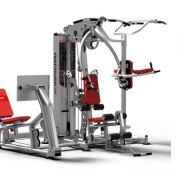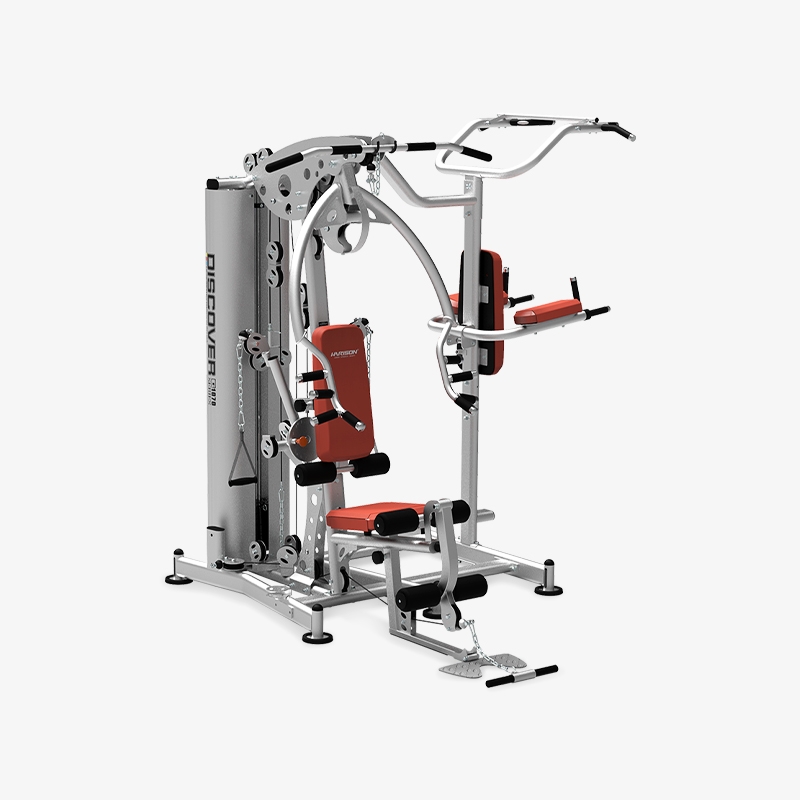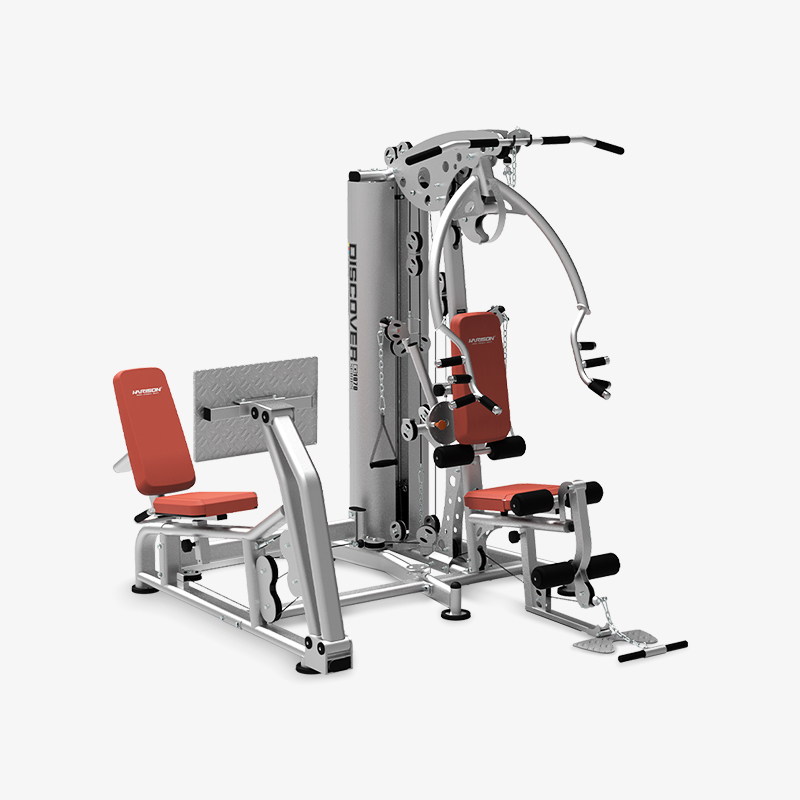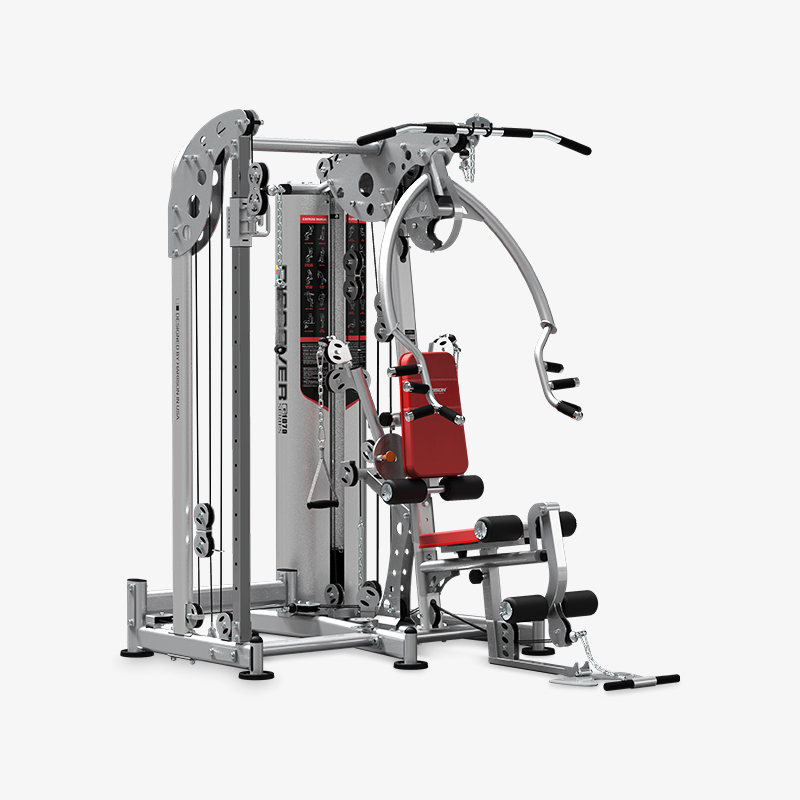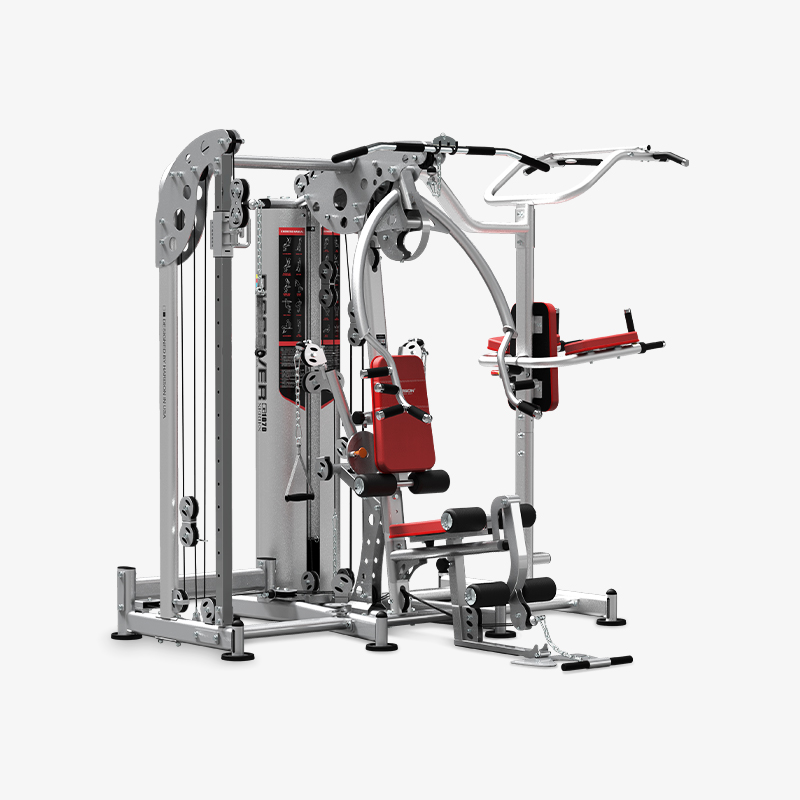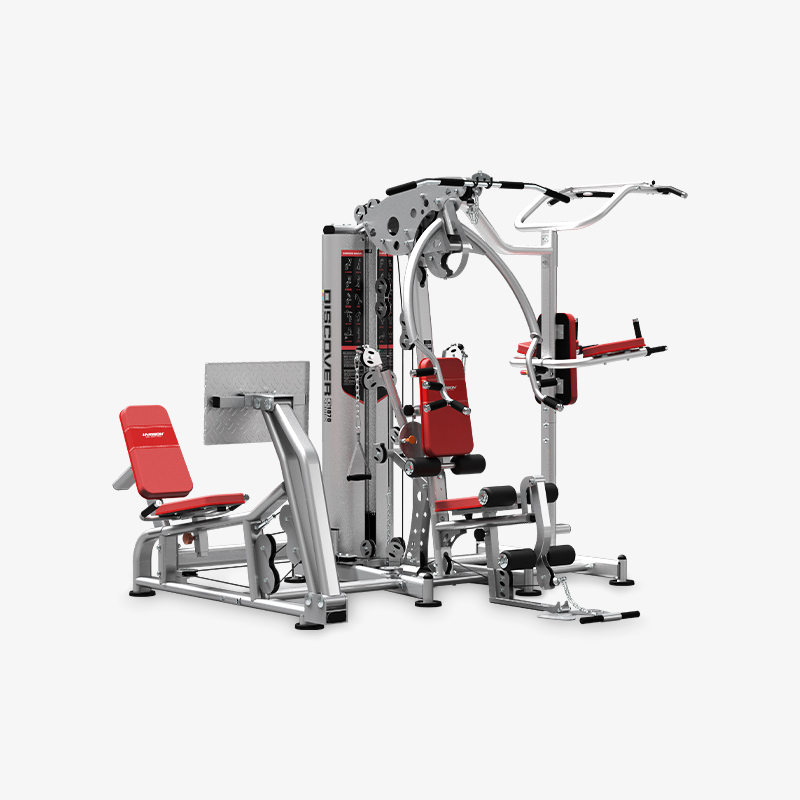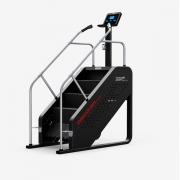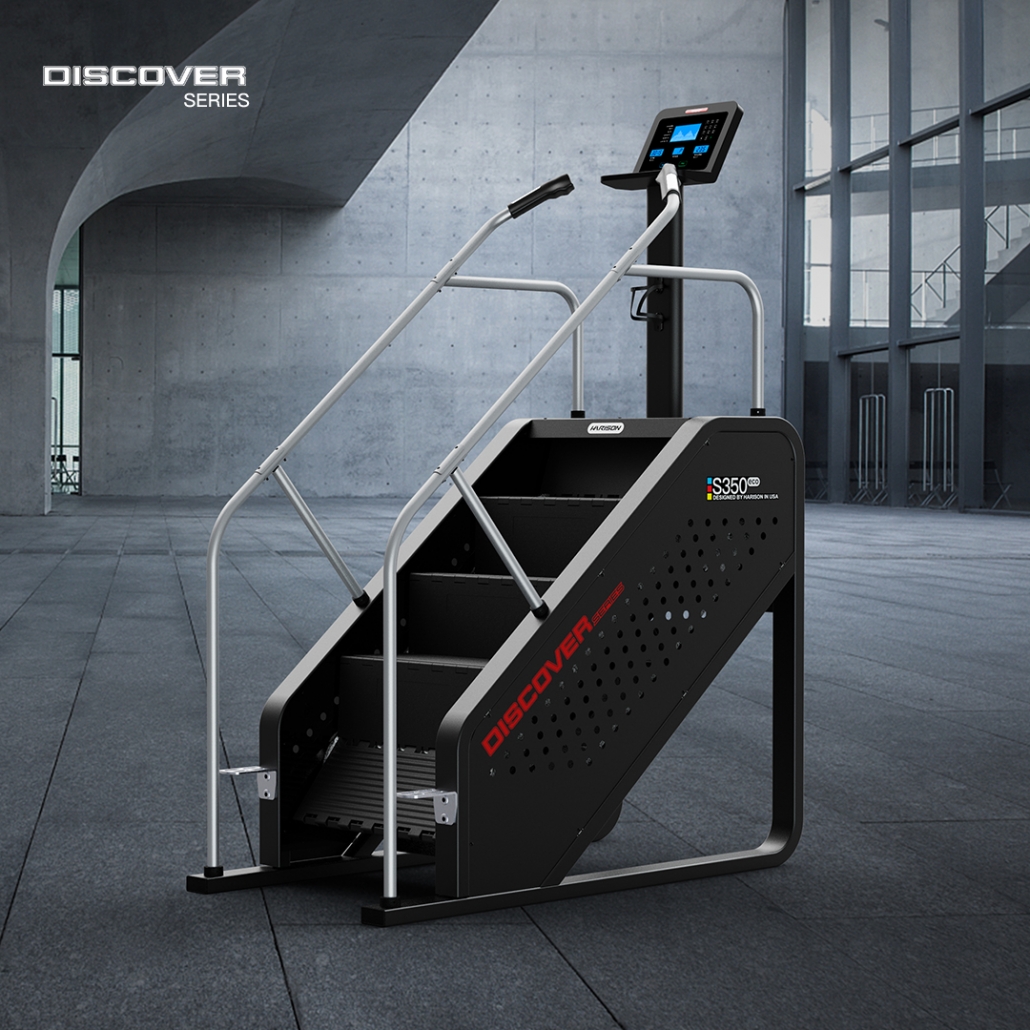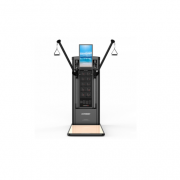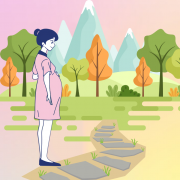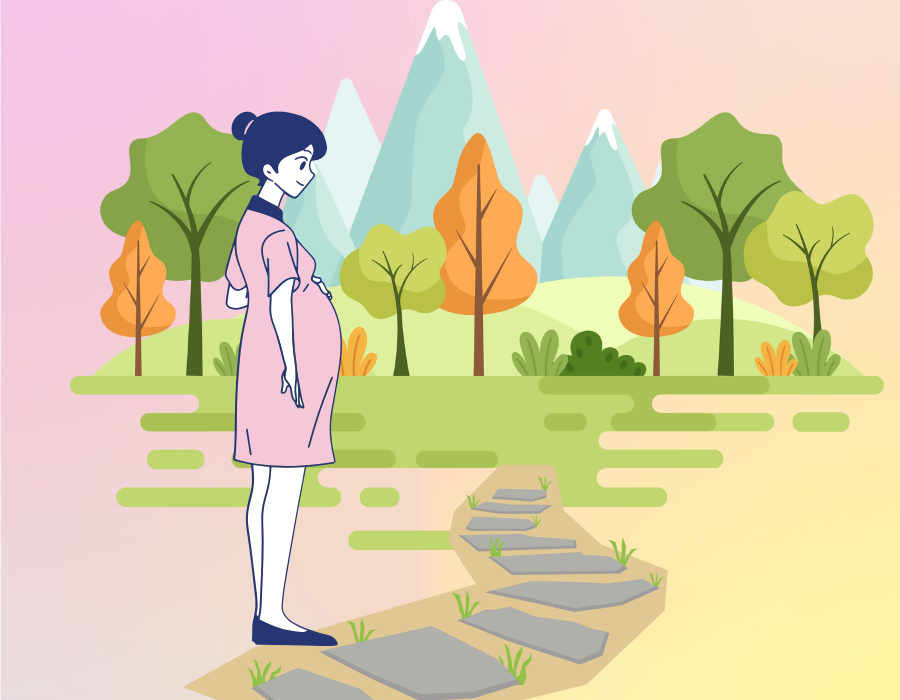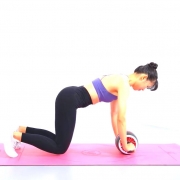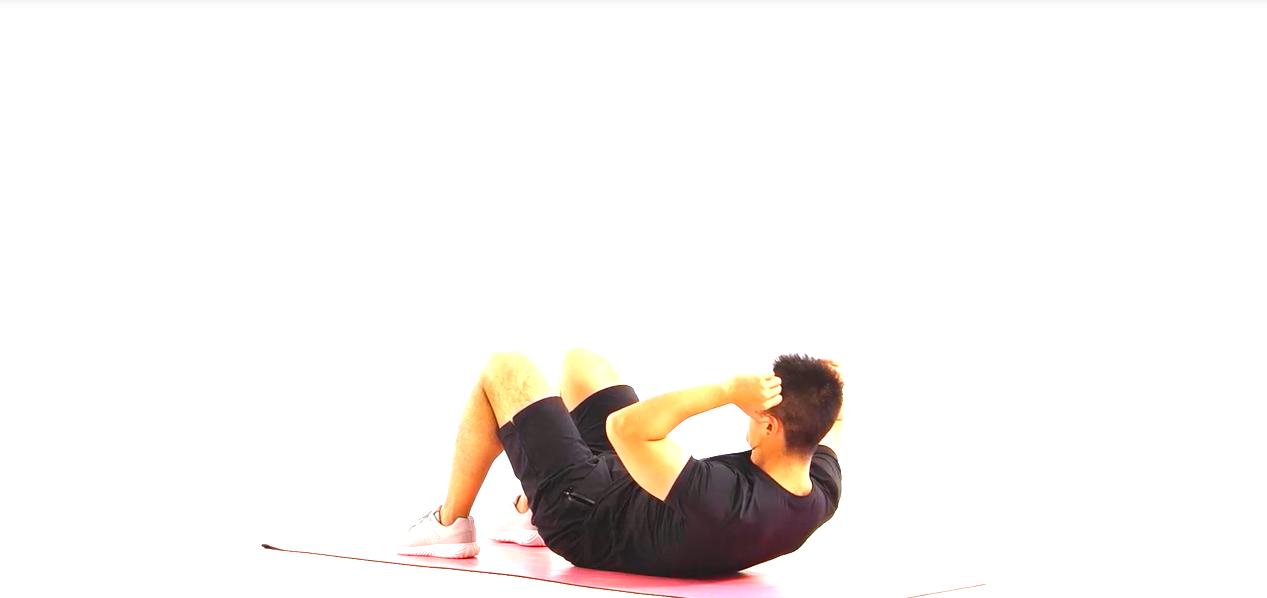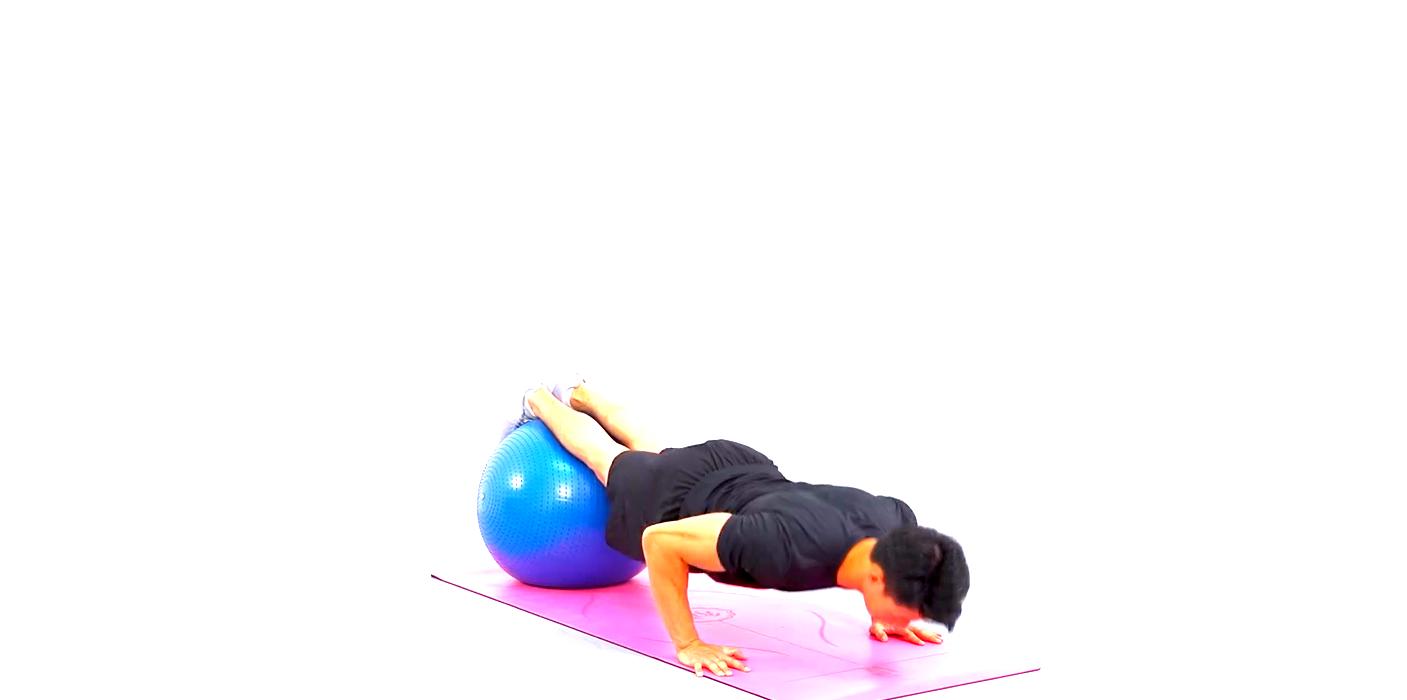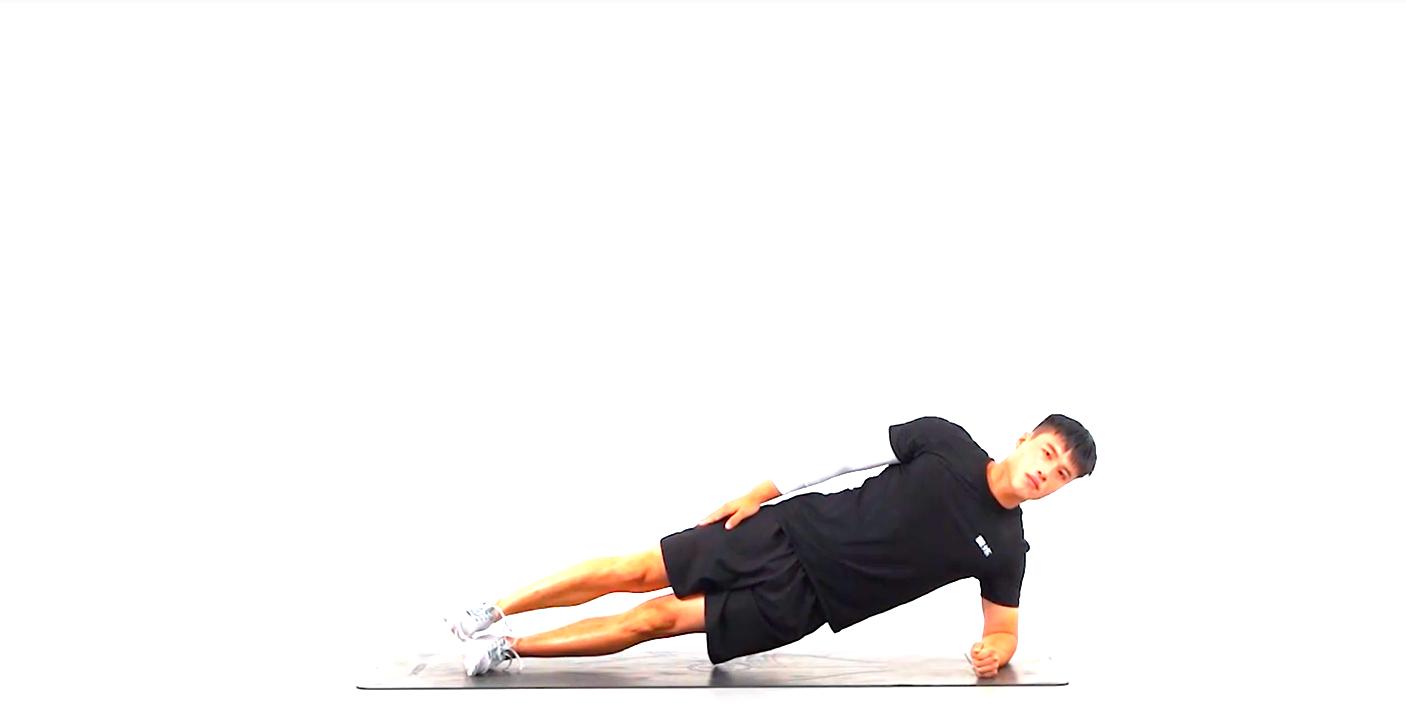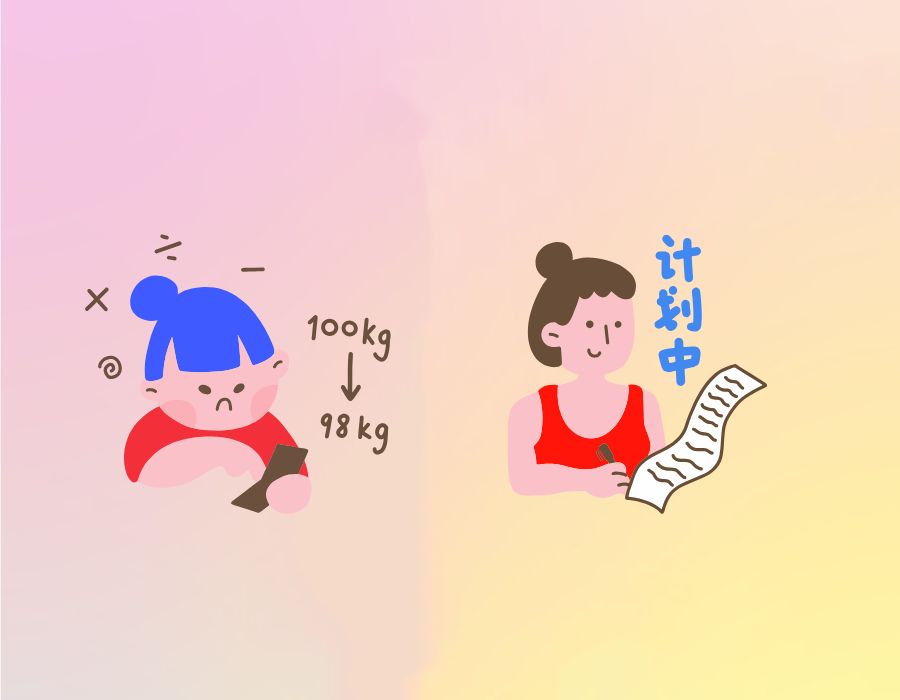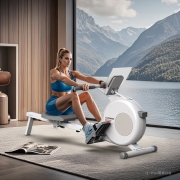HARISON Official Invitation to the 2025 China Sport Show in Nanchang
/0 Comments/in HOT NEWS, NEWSHARISON Invitation to the 2025 China Sport Show
HARISON cordially invites you to attend the 2025 China Sport Show, one of the largest and most influential events in the fitness and sports industry. We are excited to showcase our latest innovations in fitness equipment and connect with professionals and partners from around the world.
- Exhibition Dates:
May 22–25, 2025 - Booth Number:
A4005 - Venue:
NanChang Greenland International Expo Center
No. 1315 Huaiyushan Avenue, Honggutan New District
Nanchang City, Jiangxi Province, China
HARISON Featured Products in China Sport Show
- Omega T3810 Track Commercial Treadmill – Built for high-performance training, this commercial-grade treadmill delivers durability, speed, and comfort for professional use.
- B3820 Track Indoor Cycle – Designed for intensive cardio sessions, this bike offers smooth resistance and precise performance tracking.
- W3820 Track Rowing Machine – A full-body, low-impact cardio solution featuring water resistance for a natural rowing experience.
- S3820 Track Stair Climber – Engineered to simulate real stair movement, this machine enhances endurance and lower-body strength.
- E3820 Track Elliptical Trainer – Provides a joint-friendly, total-body workout with fluid motion and advanced resistance control.
- G50111 Glute Drive Machine – Targets glute muscles effectively with ergonomic support and adjustable resistance for all levels.
- G30418 Multi-Functional Trainer – A comprehensive strength training system designed for versatile, full-body workouts in one station.
Dinner Reception and Product Launch
We are pleased to host an exclusive Dinner Party and New Product Conference on the evening of the opening day.
Date & Time:
May 22, 2025 | 6:00 PM – 9:00 PM
Venue:
Wanda Realm Nanchang (Honggutan Wanda Plaza)
No. 1000 Fenghuang Middle Avenue, Honggutan District
Nanchang City, Jiangxi Province, China
This special event will feature the official unveiling of HARISON’s upcoming product lines and provide an opportunity for meaningful business exchange.
We Look Forward to Your Visit
As a trusted name in cardio, strength, and wellness, HARISON remains committed to delivering high-quality fitness solutions. We look forward to welcoming you in Nanchang and exploring new possibilities together.

HARISON Luxury Commercial Stair Climber
/0 Comments/in Exercise Equipment, HOT NEWS, NEWSHARISON Commercial Stair Climber
The HARISON Commercial Stair Climber is built for high-performance cardio training in gyms and fitness centers. With a heavy-duty steel frame, smooth step motion, and multiple resistance levels, it delivers a challenging, low-impact workout. Ideal for burning calories and building lower body strength, it’s designed to handle intense daily use with ease.
Key Features of the HARISON Commercial Stair Climber
Built for serious performance, the HARISON Commercial Stair Climber features a durable steel frame, smooth and stable step motion, and a space-efficient design. The machine includes a bright LED or touch color screen for real-time workout feedback and is compatible with the HARISON App for smart training, progress tracking, and virtual challenges. Perfect for commercial settings, it supports intense, low-impact cardio workouts for all fitness levels.
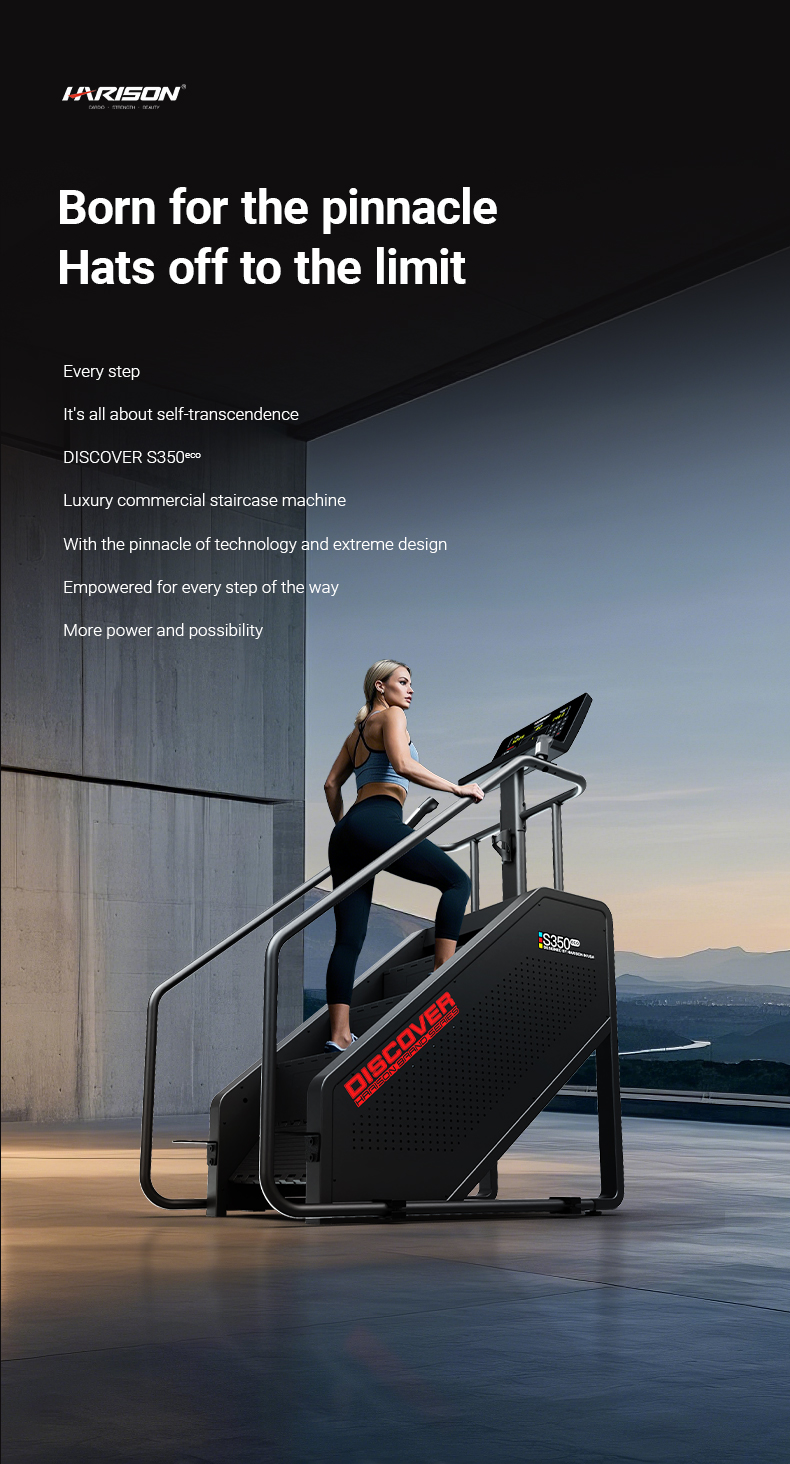
Why Choose the HARISON Commercial Stair Climber
- Premium User Experience: Smooth, quiet operation with a low step-on height and intuitive controls for all fitness levels.
- Smart Connectivity: Compatible with the HARISON App via Bluetooth for tracking workouts, virtual climbs, and more.
- Touch color screen or LED display keeps you engaged and informed.
Enhanced Safety: Anti-slip pedals, sturdy handrails, and auto shut-off features provide a safe and secure workout. - Built to Last: Heavy-duty steel frame with a corrosion-resistant finish and low-maintenance drive system—perfect for high-traffic commercial use.
- Versatile Placement: Ideal for gyms, hotels, wellness centers, and physical therapy facilities.
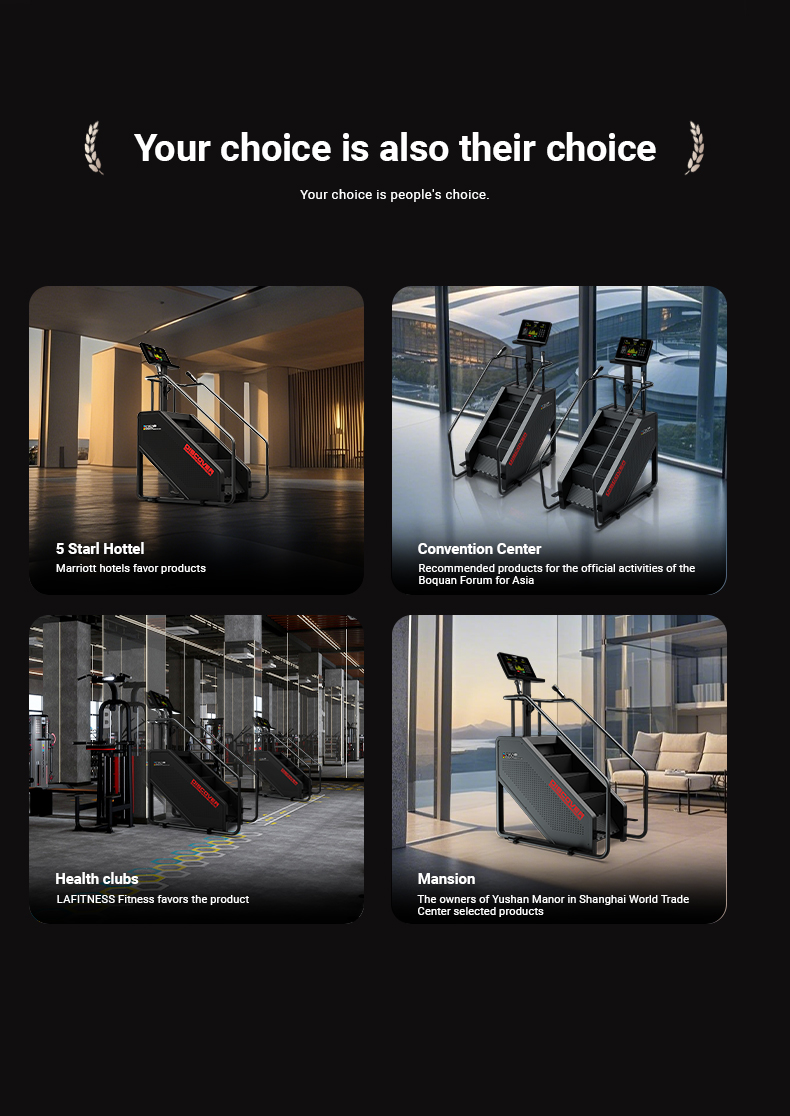
People Also Ask
Is this stair climber suitable for all fitness levels?
Yes, it offers multiple resistance levels and a user-friendly interface, making it ideal for beginners to advanced users.
Does it require a lot of maintenance? Does it require a lot of maintenance?
No, it’s designed with a low-maintenance belt drive system and durable components for long-term commercial use.
Can I sync it with my phone or fitness apps?
It supports Bluetooth and works with the HARISON App to track your progress and customize workouts.
HARISON HR-G30418 Track Intelligent Personal Training Multifunctional Strength Training
/0 Comments/in Exercise Equipment, HOT NEWS, NEWSRevolutionize Your Home Workouts with Harison Smart Power Station
Say goodbye to outdated gym gear and experience next-level strength training with the Harison Smart Power Station. Powered by second-level smart tech and pinpoint accuracy, this all-in-one fitness solution transforms how you train. Discover the G30418 Track Eco Multi-Trainer — designed to deliver that unbeatable pump and a refreshing full-body workout. Get smarter, stronger, and more efficient with every rep.


Experience Smarter Workouts with HARISON Full-Color Touchscreen System
- Stunning Color Screen
Train in style with a 23.8-inch 1920×1080 HD full-color vertical touchscreen. This intelligent display delivers crystal-clear visuals and easy navigation, making every workout feel modern and immersive. - Built-In Fitness Tutorials
Gain exclusive access to the Harison International Fitness Academy. Enjoy a library of constantly updated workout tutorials designed by American fitness pros—perfect for all fitness levels. - Five Smart Training Modes
Unlock the power of technology-driven workouts with five intelligent training modes, including Burst Mode. These scientifically designed options adapt to your goals, helping you train harder and smarter.
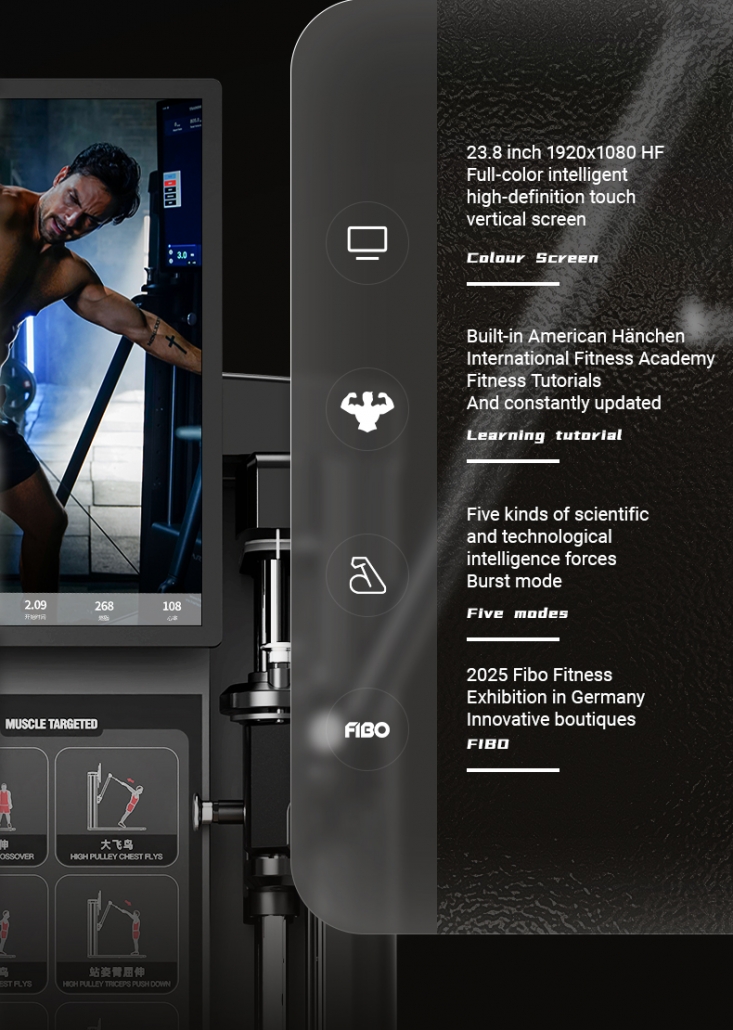
Five Resistance Modes for Smarter, Full-Body Strength Training
- Total Versatility
Harison’s Smart Power Station offers five resistance patterns to meet all your fitness needs. Each mode targets muscles differently, maximizing gains and enhancing recovery through scientifically proven training methods. - Normal Mode
Balanced resistance — the force you pull out equals the force that returns. Great for traditional strength training. - Centripetal Mode
Pull harder, return easier. This mode builds explosive strength and muscle activation. - Centrifugation Mode
Pull easier, return harder. Perfect for building control and muscle endurance. - Isokinetic Mode
Resistance adapts to your speed — faster movement, more resistance. Ideal for advanced conditioning. - Spring Mode
Like training with dynamic resistance bands, this mode varies resistance with speed for functional and athletic training.
Breakthrough muscles of various parts carved with you.HARISON Discover G30418Trackeco breaks through the shackles of convention and integratesthe concept of multi-sport, Abundant training positions. Sculpt muscles in all parts toimprove coordination and meet diverse needs.Lorem ipsum dolor sit amet, consectetur adipiscing elit. Ut elit tellus, luctus nec ullamcorper mattis, pulvinar dapibus leo.
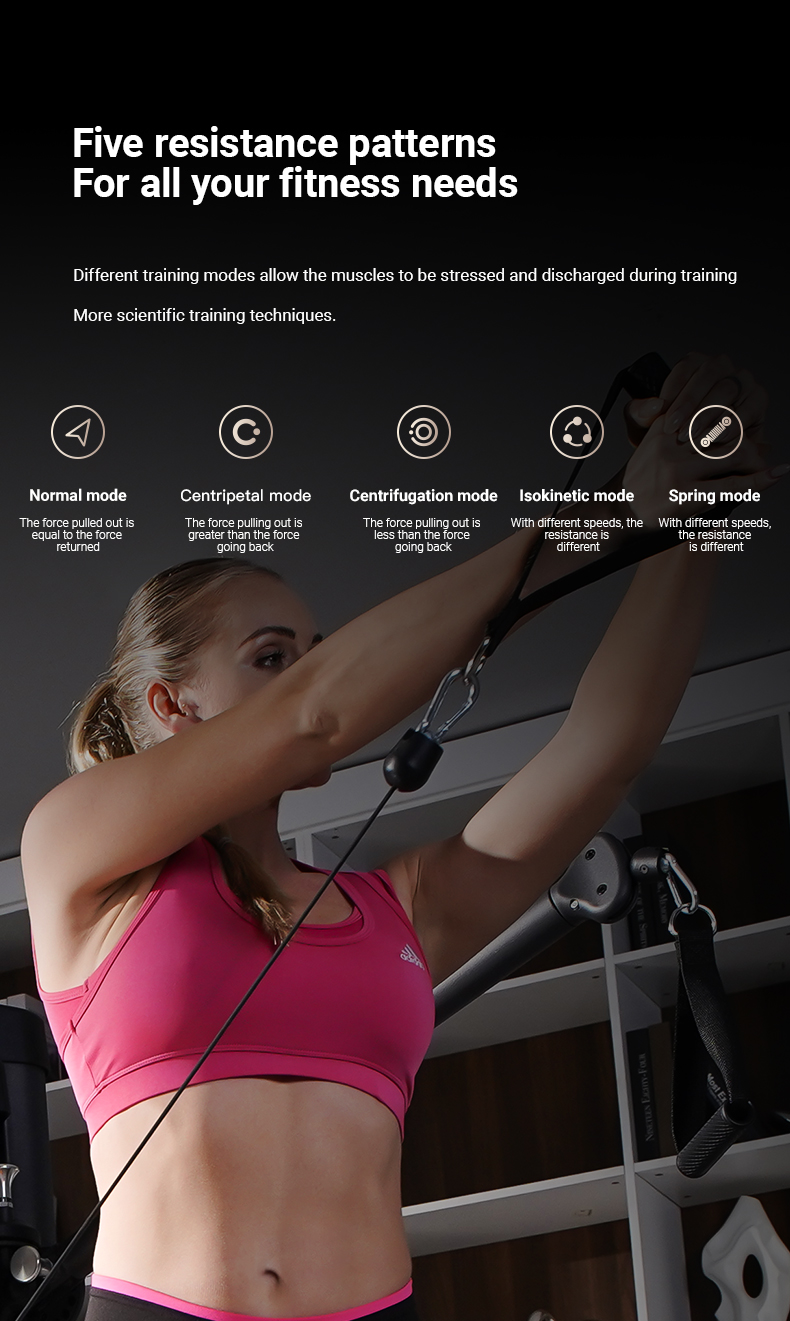

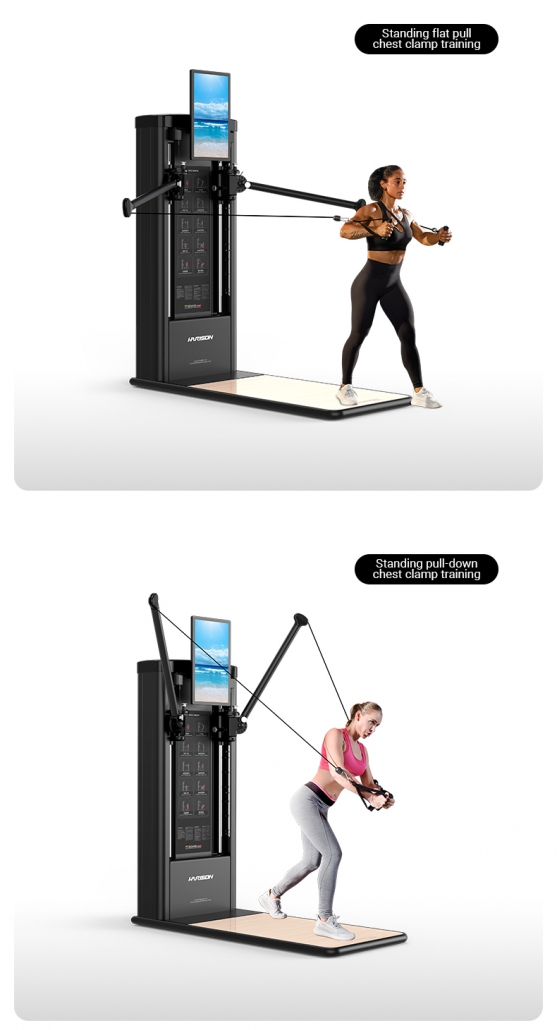
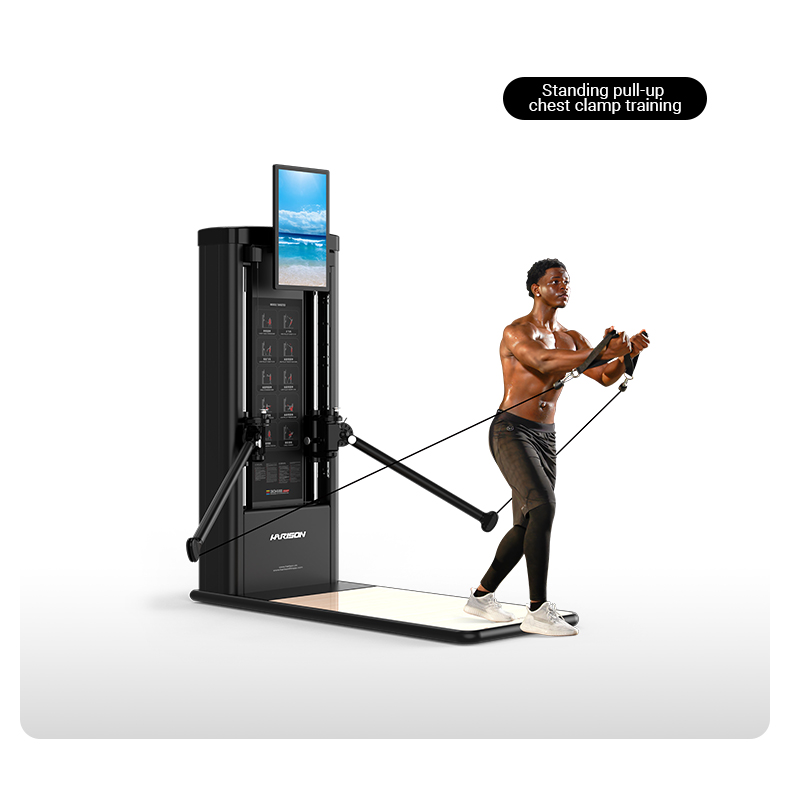
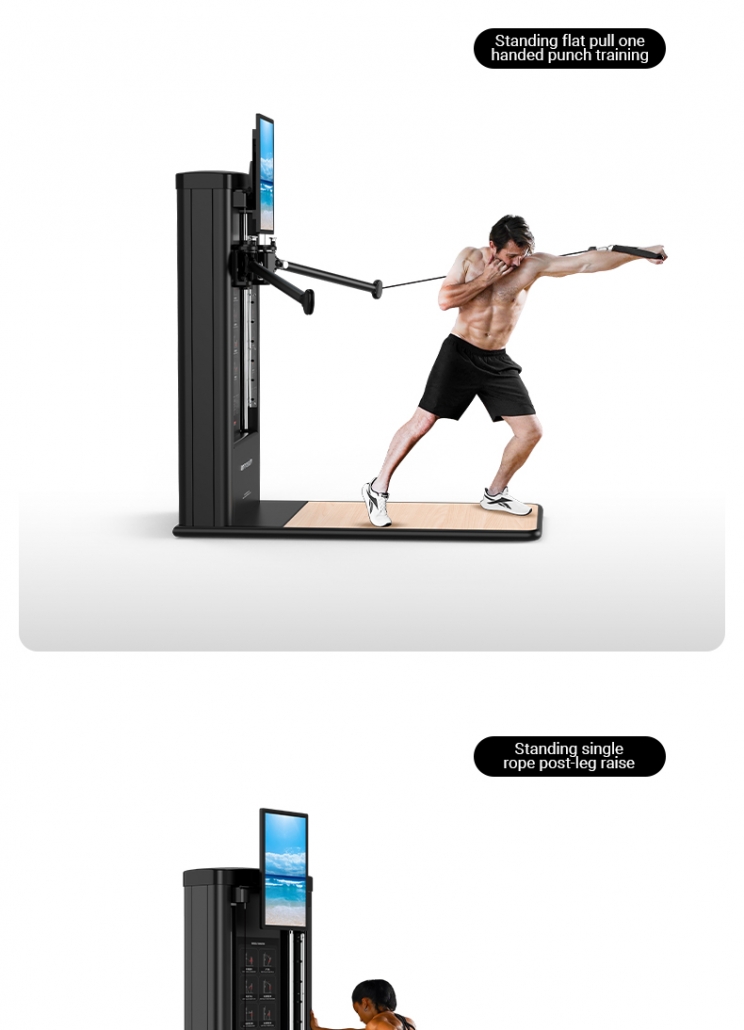
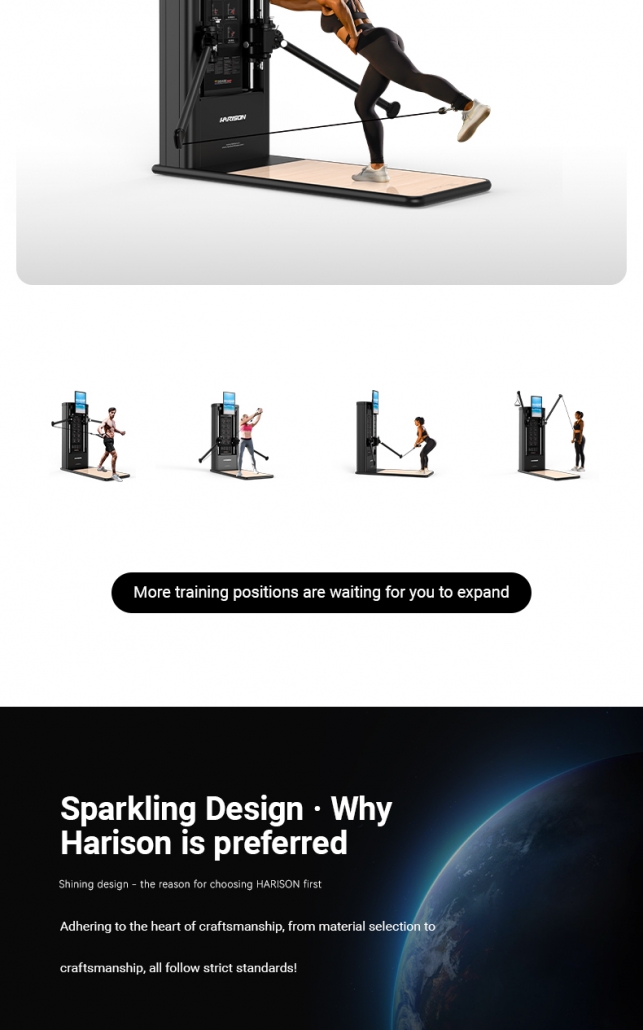
Precision-Engineered Adjustable Arms for Customized Training
Precision-Engineered Adjustable Arms for Customized Training
The Harison Smart Power Station features expertly crafted movable arms on both sides, designed for ultimate flexibility and precision. These multi-directional arms allow for seamless adjustments, enabling users to target muscles from virtually any angle.
The system provides unmatched versatility with 7 vertical adjustment gears, 3 lateral (left and right) gears, and 9 total upper and lower gear positions. Whether you’re focusing on upper body isolation or full-body functional movement, the fine-tuning capabilities allow you to match a wide range of training postures.
This level of adjustability supports a diverse array of fitness routines—perfect for users with varying workout goals, body types, and strength levels. It’s engineered for those who demand performance and personalization in their strength training equipment.
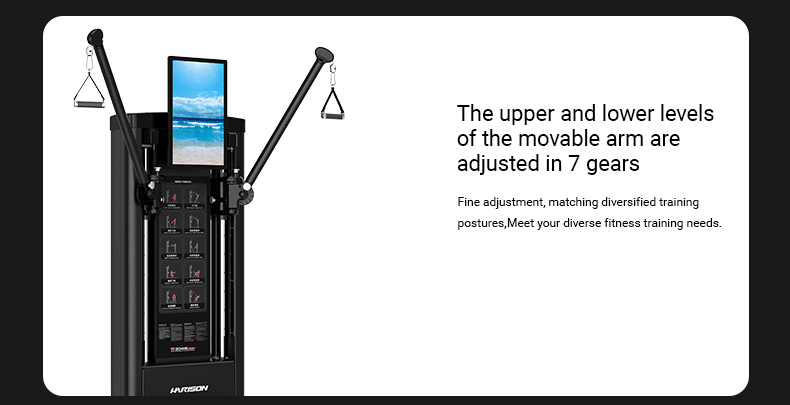
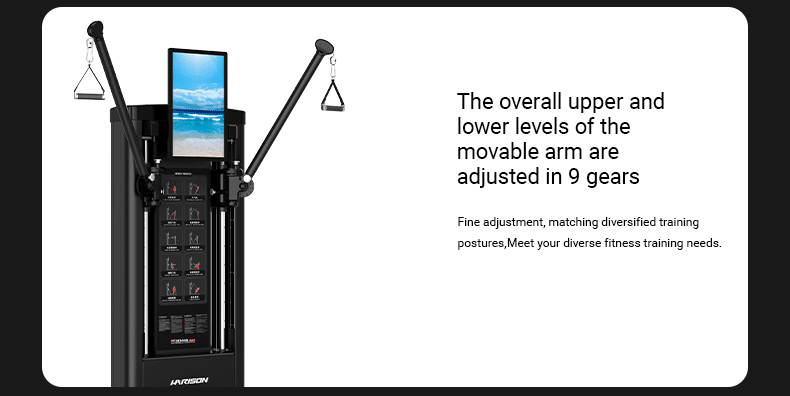
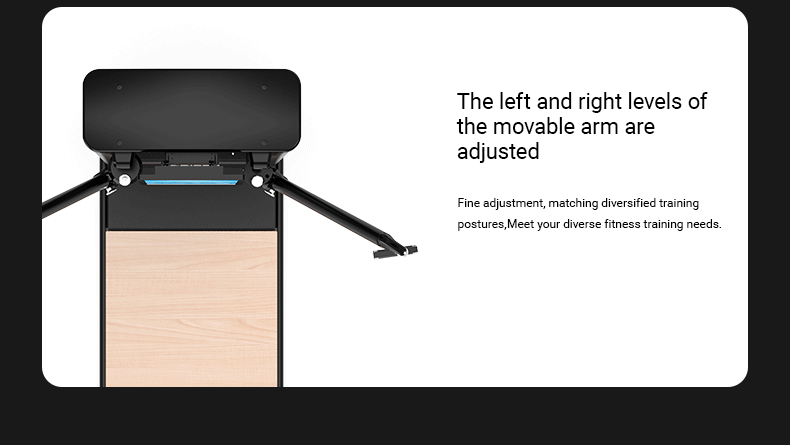
People Also Ask
How many positions can the arms be adjusted to?
The arms offer 7 vertical, 3 horizontal, and 9 total upper/lower adjustments—plenty of range for all your training needs.
Can I target different muscle groups with the adjustable arms?
Absolutely. The multi-directional design lets you fine-tune angles for chest, shoulders, back, and more.
Is it easy to adjust the arm positions?
Yes! The gears are smooth and quick to adjust, so you can switch positions without interrupting your workout.
Who is this machine best for?
It’s great for everyone—from beginners to pros—because you can customize your workouts to match your fitness level and goals.
How to Enjoy Milk Tea in a Healthier Way
/0 Comments/in Blog, otherIf you have any queries or suggestions, please feel free to reach out via email to info@harisonfitness.com. We will do everything in our capacity to ensure that you love your experience with us.

-
Sugar Level: Less Sugar or No Sugar
-
Topping Principle: Low Fat, Low Sugar, and Low Starch Are Key
-
Low-starch toppings: Coconut jelly, grass jelly, pudding, konjac, agar, tapioca pearls, and fruit granules.
-
High-starch toppings: Brown sugar pearls, taro, Oreo, glutinous rice, taro balls, red beans, and ice cream.

Does a Low-Carb Diet Make You Dumber? Debunking the Myth!
/0 Comments/in otherIf you have any queries or suggestions, please feel free to reach out via email to info@harisonfitness.com. We will do everything in our capacity to ensure that you love your experience with us.
In recent years, many people have adopted low-carb diets for fat loss, muscle gain, and overall health. However, rumors persist that cutting carbs can impair brain function. Is there any truth to this claim? Let’s investigate.
01: Understanding Low-Carb Diets
A low-carb diet reduces daily carbohydrate intake. Popular plans like the ketogenic diet fall under this category. Based on daily intake, low-carb diets can be classified as:
-
Very low-carb: <50g carbs/day (<10% of energy)
-
Low-carb: <130g carbs/day (<26% of energy)
-
Moderate-carb: <225g carbs/day (<45% of energy)
The goal? To shift the body’s energy source from glucose to ketones, produced from fat and dietary fiber.
02: How Low-Carb Affects the Brain
The brain relies heavily on glucose, primarily derived from carbs. Critics argue that low-carb diets starve the brain of glucose, leading to sluggishness or cognitive decline.
Reality check:
The brain is adaptable! When glucose is scarce, it switches to ketones (via ketosis) or creates glucose from non-carb sources (gluconeogenesis). Ketones are actually a more efficient fuel, often enhancing mental clarity and focus.
03: Does Low-Carb Really Dull Your Mind?
While the body needs some glucose, low-carb diets don’t cause a shortage. The liver produces glucose through gluconeogenesis using amino acids and other substrates.
Why do some feel foggy at first?
-
It’s a temporary “carb withdrawal” phase, similar to quitting sugar or caffeine.
-
Symptoms (fatigue, brain fog) usually last a few days to weeks.
-
After adaptation, many report sharper focus, better memory, and stabilized mood.
Key advice:
-
Transition gradually (moderate → low → very low carb).
-
Consult a nutritionist or doctor before extreme carb restriction.

Final verdict: Low-carb won’t make you dumb—it may even optimize your brain!
Remember: Listen to your body, and tailor your diet to your needs. Smart eating leads to smart thinking!
How to Manage High Blood Pressure During Pregnancy?
/0 Comments/in Blog, otherIf you have any queries or suggestions, please feel free to reach out via email to info@harisonfitness.com. We will do everything in our capacity to ensure that you love your experience with us.
High blood pressure (hypertension) during pregnancy can lead to more serious complications if left unmanaged. Early medical attention is crucial for both maternal and fetal health.
01: What Is Gestational Hypertension?
When high blood pressure first develops during pregnancy (typically after 20 weeks), it’s called gestational hypertension or pregnancy-induced hypertension (PIH). Blood pressure measures the force of blood against artery walls. A reading above 140/90 mmHg is considered high.
Good news: This condition usually resolves on its own within 6 weeks after delivery.
02: Risks to Mother and Baby
Effects range from mild to severe, including:
-
Organ damage (kidneys, liver, etc.)
-
Reduced blood flow to the placenta, limiting oxygen/nutrients for the baby
-
Low birth weight or preterm delivery
-
Long-term risks (higher chance of heart disease/hypertension later in life)
Most dangerously, it may progress to preeclampsia—a life-threatening condition causing seizures (eclampsia), organ failure, or even maternal death.
03: Management & Safe Exercises
Doctors may prescribe blood pressure medication, but mild cases often just require close monitoring. Regular exercise helps lower BP naturally.
1. Walking (Ideal for All Trimesters)
-
How: Walk briskly 1 hour after meals. Lift knees slightly and swing arms to engage core muscles.
-
Breathing: Inhale for 2 steps, exhale for 2 steps.
-
Duration: Until slightly tired (not exhausted).
2. Swimming (Low-Impact Full-Body Workout)
-
Best stroke: Breaststroke strengthens back, abs, and arms—great for labor prep!
-
Water temp: Avoid cold pools to prevent cramps.
-
Duration: 30–40 mins (with breaks), 3–4 times/week.
Note: Always consult your doctor before starting exercise.

Key Takeaway: While manageable, gestational hypertension demands regular check-ups to protect you and your baby. Stay active, eat well, and monitor closely!
High-Intensity Core Blast: Carve Out Those Shredded Abs!
/0 Comments/in NEWSIf you have any queries or suggestions, please feel free to reach out via email to info@harisonfitness.com. We will do everything in our capacity to ensure that you love your experience with us.
For us fitness enthusiasts, abs aren’t just a goal—they’re an obsession. A simple “11-line” waist is just the starting point; what we truly crave are those chiseled, block-like abs, shark lines, and Adonis belts. Ready to level up? Let’s dive in!
01: Full Core Activation
We all know the first step to visible abs is fat loss + muscle growth. For men, body fat must drop below 15%; for women, under 20%.
But low body fat alone isn’t enough. To achieve crisp definition, your abs need thickness and volume. That’s why training must evolve:
-
Beginners: Focus on fat loss and basic core activation.
-
Intermediate (4-pack seekers): Ramp up intensity to target the upper/lower rectus abdominis and obliques for shark lines and V-cut abs.
02: 4 Killer Ab Circuits for Next-Level Definition
*Perform 12-15 reps per set. Push to failure where noted!*
Circuit 1: Weighted Knee Raises + Crunches
-
Weighted raises: Lift hips fully to maximize ab engagement.
-
Crunches: Stretch and contract abs dynamically.
Circuit 2: Cable Knee Raises + Decline Push-ups
-
Cable raises: Adjust weight so failure hits at rep 12.
-
Decline push-ups: Drop sets! Do 12 reps, then immediately continue with bodyweight.
Circuit 3: Standing Dumbbell Twists + Side Planks
-
Twists (30 total reps): Keep core tight; rotate slowly (no hip movement!).
-
Side planks: Hold 30s/side × 3 sets. No sagging hips!
Circuit 4: Ab Wheel Rollouts + Decline Leg Raises
-
Rollouts: Stretch abs fully—control the wheel!
-
Leg raises: Drive hips upward for lower-ab annihilation.
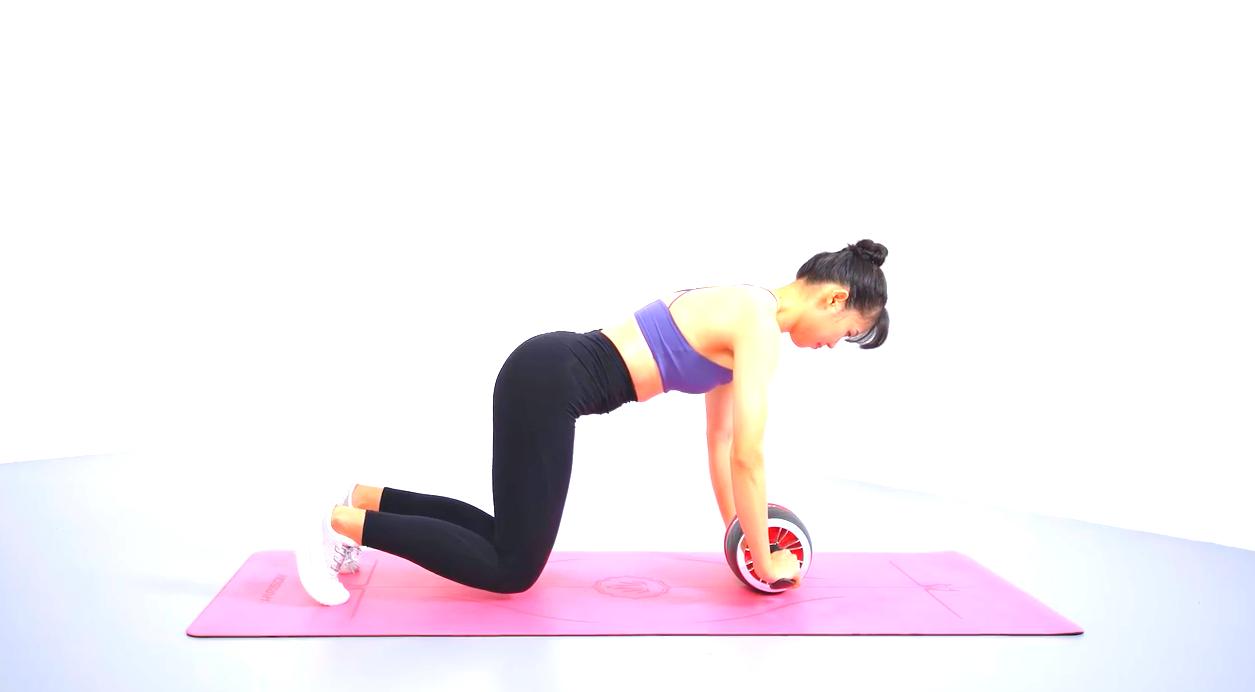
Pro Tip: This advanced routine is 2x/week max. Pair with clean eating for god-tier abs!
Time to grind—your future six-pack starts NOW!
How Should Fitness Beginners Eat for Better Results?
/0 Comments/in NEWSFitness is 70% diet and 30% exercise! Let’s eat happily and train effortlessly~
01: Nutrition and Goal Setting
1. Essential Nutrients in Food
-
Macronutrients: Protein, carbohydrates, fats
-
Micronutrients: Vitamins, minerals
-
Others: Dietary fiber, water
2. Calories and Body Fat
Calories fuel our body’s metabolism and daily activities.
-
Caloric deficit: Leads to weight loss but also reduces muscle mass, energy, and strength.
-
Balanced intake: Helps maintain a healthy physique.
-
Caloric surplus: Results in fat gain.
3. Body Fat vs. Muscle
-
Body fat percentage determines how “lean” you appear.
-
More muscle = higher calorie burning efficiency, reducing fat storage.
-
Focusing only on fat loss (without muscle gain) often leads to rebound weight gain.
02: Diet & Training Plan
Here’s a recommended approach for fat loss + muscle toning:
Key Focus Areas:
-
Total calorie intake
-
Macronutrient balance (protein, carbs, fats)
Daily Calorie Calculation:
Formula: (Basal Metabolic Rate × 1.5) × 85%
Example: A 20-year-old woman (165cm, 50kg)
-
BMR ≈ 1270 kcal
-
Daily intake = 1270 × 1.5 × 0.85 ≈ 1620 kcal
Macronutrient Ratio (Fat Loss Phase):
-
Protein: 1.8g per kg body weight
-
Carbs: 3.5g per kg body weight
-
Fats: 1.2g per kg body weight
Pro Tip: Combine this with 3x weekly cardio and strength training for faster results!
03: Meal Plan & Quick Recipes (10-Min Prep!)
Breakfast: High carbs + moderate protein + healthy fats
Example:
-
Oatmeal
-
2 slices whole wheat bread
-
3 boiled egg whites
-
Handful of unsalted nuts
Method:
-
Cook oats in boiling water.
-
Boil eggs (or use an egg cooker).
-
Top oatmeal with nuts.
Lunch: Moderate carbs + high protein + some fats
Example:
-
Mixed rice (black/brown/white)
-
Steamed beef slices
-
Steamed enoki mushrooms or bok choy
Method:
-
Cook rice blend (1:1:1 ratio) in a rice cooker.
-
Steam lean beef for 4 mins.
-
Add veggies and drizzle with low-fat sauce.
Dinner: Low carbs + high protein + some fats
Example:
-
Tuna-avocado sandwich
-
Shrimp & quail egg salad
Method:
-
Mash tuna with avocado, stuff into toasted whole wheat bread.
-
Boil shrimp & quail eggs, toss with greens and light dressing.
Remember: Eat joyfully, train smartly, and enjoy the journey!
HR-W9 Eco Magnetic Resistance Rowing Machine
/0 Comments/in Blog, Exercise EquipmentHR-W9 Eco Luxury Self-Generating Magnetic Rowing Machine
The HR-W9 Eco Luxury Self-Generating Magnetic Rowing Machine is a masterpiece of modern fitness engineering, designed to redefine your home workout experience. Featuring an innovative self-generating power system, it eliminates the need for external power sources while delivering consistent, smooth resistance for all fitness levels. Crafted with precision and built using premium materials, its sleek and durable frame ensures both stability and style. Whether you’re aiming to boost cardio endurance or tone your entire body, the HR-W9 Eco provides a full-body workout that mimics real water rowing. With whisper-quiet operation and ergonomic design, it turns any space into your personal fitness studio. Get ready to enjoy an unmatched rowing experience—anytime, right at home.
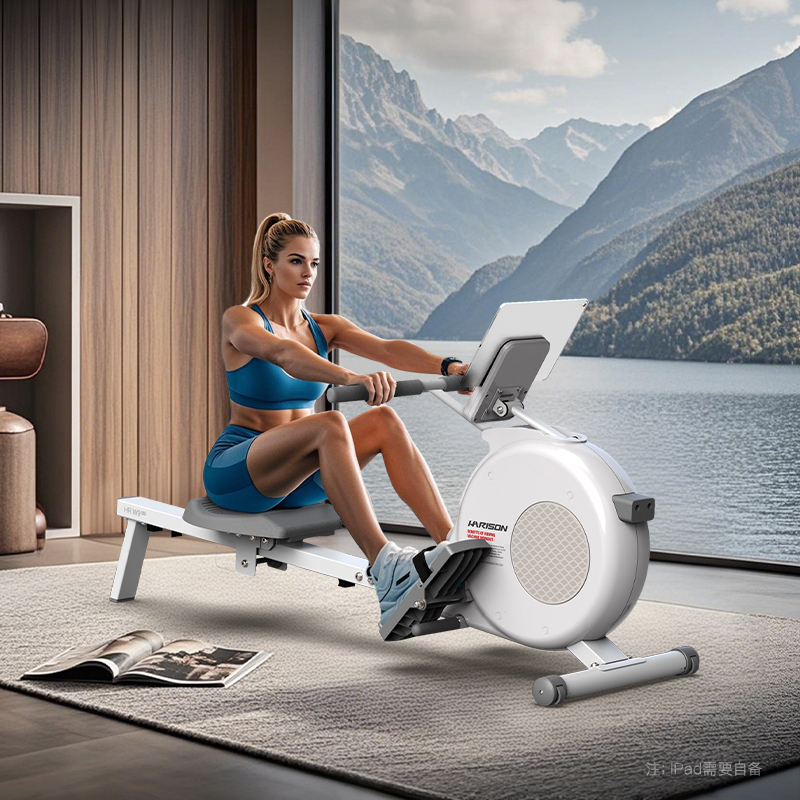
Refined to Perfection: A Masterpiece of Design and Innovation
The HARISON HR-W9 Eco Rowing Machine is a bold statement of minimalist luxury and futuristic innovation. Crafted on a foundation of sleek, modern aesthetics, it seamlessly blends cutting-edge technology with a sense of spatial harmony to create a truly transformative workout experience. Every detail has been thoughtfully refined through thousands of design iterations, each one pushing the boundaries of form and function. From the precision of its structure to the brilliance of its features, the HR-W9 Eco radiates craftsmanship, intelligence, and creativity. This isn’t just a piece of fitness equipment—it’s a work of art forged through dedication and a relentless pursuit of perfection. With every polished detail, it sets a new standard for excellence in home fitness.
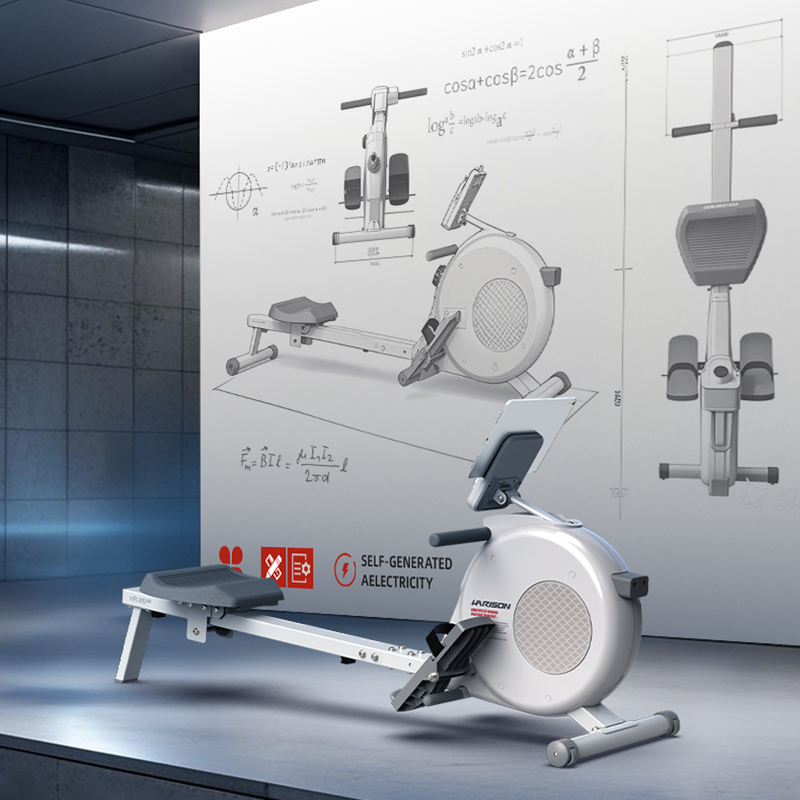
Smart Resistance, Limitless Freedom
The HARISON HR-W9 Eco Rowing Machine features 16 levels of precision magnetic resistance for a smooth, customizable workout at any fitness level. Its advanced self-generating power system offers total freedom with no need for cords, delivering 100% power generation and 80% kinetic energy recovery. With ultra-quiet operation at just 35dB and a sleek, noise-reducing design, it’s perfect for home or outdoor use—combining performance, innovation, and convenience in one powerful machine.
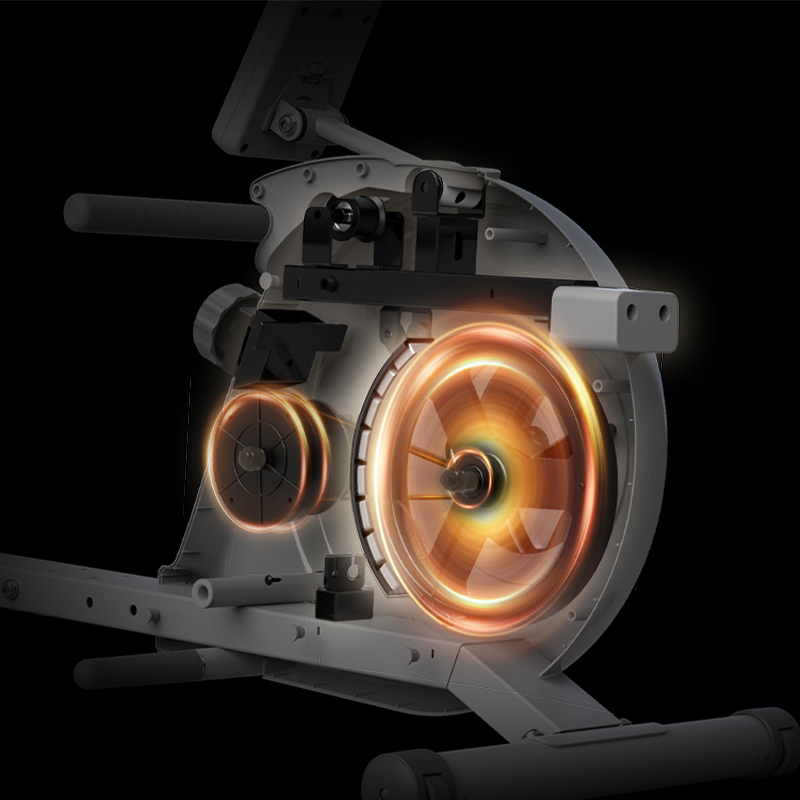
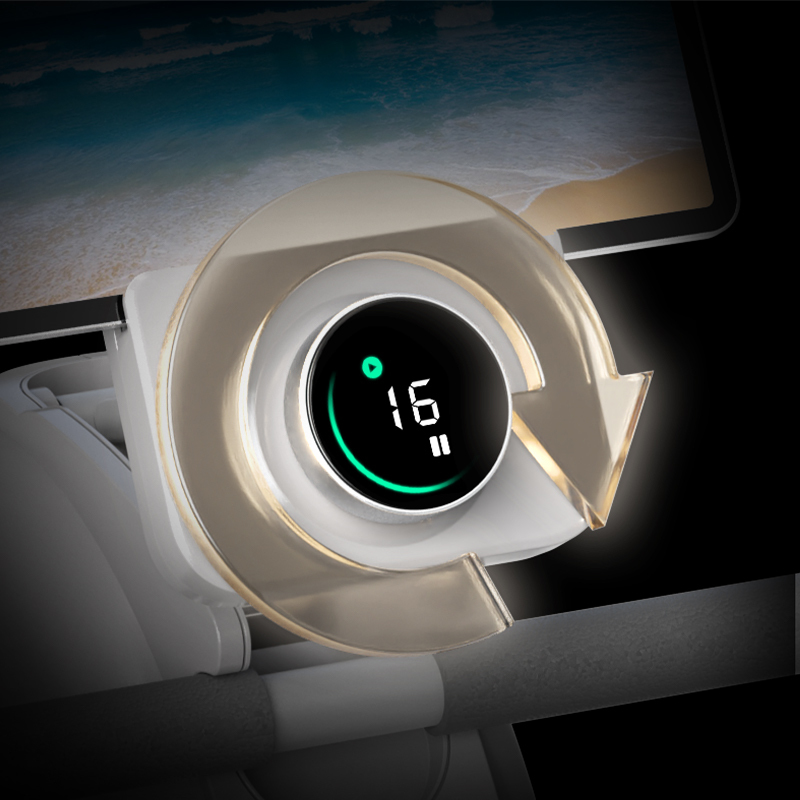
Full-Body Training for All: Precision Design, Family-Friendly Fitness
Exercise 90% of the body’s muscles, suitable for the whole family. Provide full support for professional training. Whether sitting, standing or other movements, you can flexibly train and exercise different muscle groups. Arms, hips, legs, and full body training can all be taken into account. The 483MM rope exit point can accurately carve the abdominal and back muscles, the 620MM slide rail ensures the integrity of each movement, the 5.5° inclined slide rail assists the hip and leg force points, and the 305MM pedal can adapt to users of different heights and leg lengths.
People Also Ask
What muscle groups can I train with this rowing machine?
You can target up to 90% of your body’s muscles, including arms, core, back, hips, and legs—for both upper and lower body workouts.
Can I do more than just seated rowing?
Absolutely. The machine supports a variety of training movements, including seated, standing, and other postures to engage different muscle groups.
How does the machine support proper movement and form?
A 620MM slide rail, 5.5° incline, and 305MM adjustable pedals ensures smooth motion, ergonomic support, and proper muscle engagement for users of various heights.
Is it effective for core training?
The 483MM rope exit point is designed to activate and sculpt abdominal and back muscles during workouts.
Contact Us
Tlephone:
+1(800)865-2125
Departure Date:
PST 5:30 am – 8:00 pm
![]()
![]()
![]()
support@harisonfitness.com
info@harisonfitness.com
Internationality:
sales01@harisonfitness.com
sales02@harisonfitness.com
532 S Hicks Rd, Palatine IL 60067 USA
Google Maps Navigation Address:532 S Hicks Rd, Rolling Meadows, IL

